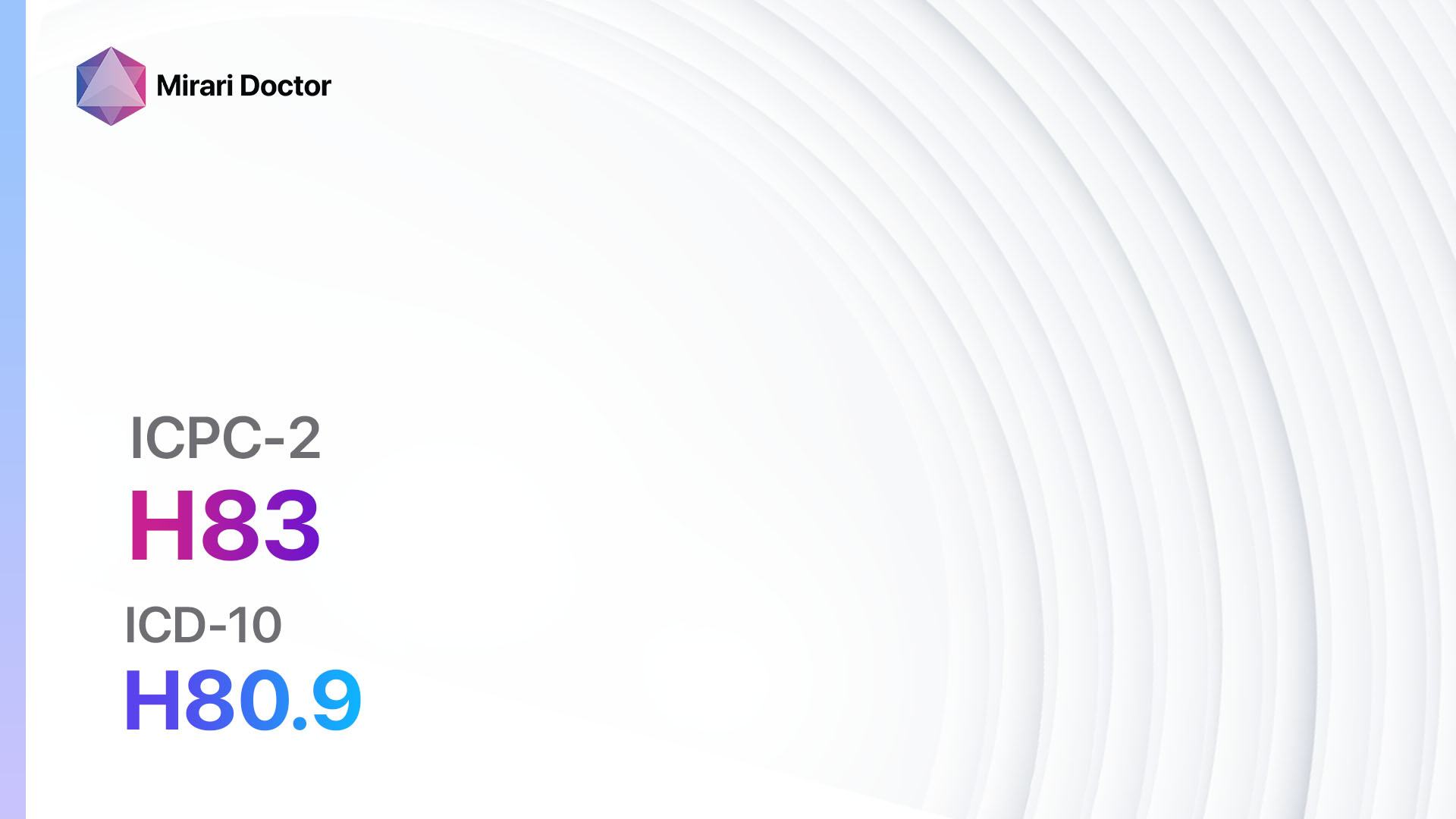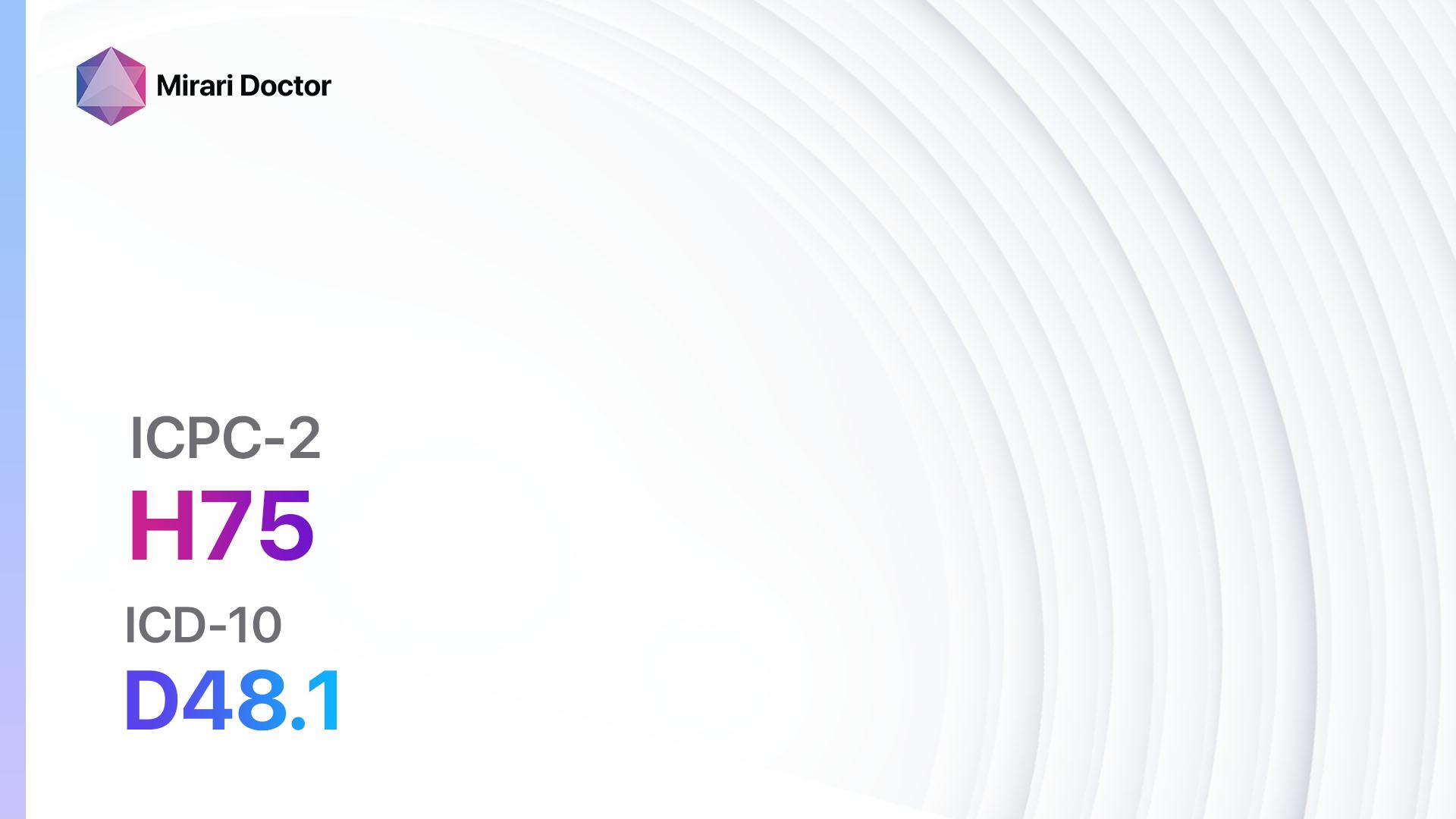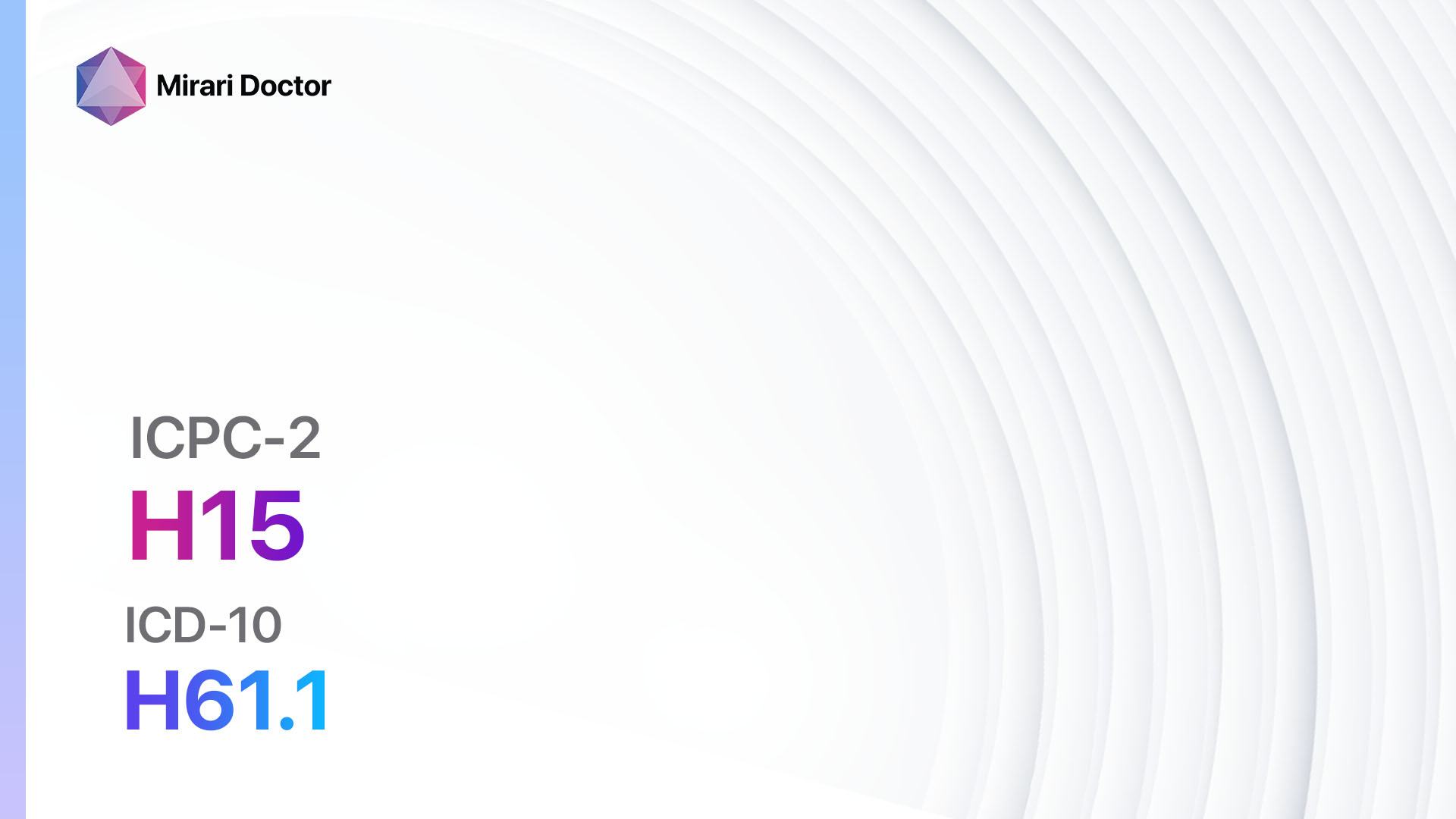
Introduction
Ear discharge, also known as otorrhea, is a condition characterized by the abnormal drainage of fluid or pus from the ear. It can be caused by various factors, including infections, trauma, foreign objects, or underlying medical conditions.[1] This guide aims to provide a comprehensive overview of the diagnostic steps, possible interventions, and patient education related to ear discharge.
Codes
Symptoms
- Persistent ear pain
- Itching or irritation in the ear
- Hearing loss or muffled hearing
- Fever
- Drainage of fluid or pus from the ear[4]
Causes
- Otitis media (middle ear infection)
- Otitis externa (swimmer’s ear)
- Trauma to the ear
- Foreign objects in the ear
- Eczema or dermatitis of the ear canal
- Mastoiditis (infection of the mastoid bone)
- Cholesteatoma (abnormal skin growth in the middle ear)
- Tumor or growth in the ear[5]
Diagnostic Steps
Medical History
- Gather information about the patient’s symptoms, including the duration and severity of ear discharge, associated pain or discomfort, and any previous episodes.
- Inquire about any recent trauma to the ear, exposure to water or foreign objects, or underlying medical conditions that may contribute to ear discharge.
- Ask about any history of ear infections, allergies, or previous treatments for ear-related issues.[6]
Physical Examination
- Inspect the external ear for signs of inflammation, redness, or swelling.
- Examine the ear canal using an otoscope to assess for any abnormalities, such as discharge, foreign objects, or signs of infection.
- Evaluate the eardrum for perforation or signs of infection.
- Palpate the area around the ear to check for tenderness or swelling.[7]
Laboratory Tests
- Culture and sensitivity testing: Collect a sample of the ear discharge for laboratory analysis to identify the specific bacteria or fungi causing the infection and determine the most effective treatment.
- Complete blood count (CBC): Assess the white blood cell count to determine if there is an underlying infection.
- Allergy testing: If allergies are suspected as a contributing factor, perform allergy testing to identify potential allergens.[8]
Diagnostic Imaging
- Computed tomography (CT) scan: Use CT imaging to evaluate the structures of the ear and identify any abnormalities, such as tumors or cholesteatoma.
- Magnetic resonance imaging (MRI): In cases where a more detailed evaluation is required, an MRI may be recommended to assess the extent of the infection or identify any underlying structural issues.[9]
Other Tests
- Audiometry: Conduct a hearing test to assess the patient’s hearing ability and determine if there is any hearing loss associated with the ear discharge.
- Tympanometry: Measure the movement of the eardrum in response to changes in air pressure to evaluate the middle ear function.
- Biopsy: If a tumor or growth is suspected, a biopsy may be performed to obtain a tissue sample for further analysis.[10]
Follow-up and Patient Education
- Schedule a follow-up appointment to monitor the progress of treatment and assess the resolution of symptoms.
- Educate the patient about proper ear hygiene, including avoiding the use of cotton swabs or other objects to clean the ears, and the importance of keeping the ears dry.
- Provide information on the importance of completing the full course of prescribed medications and any necessary follow-up appointments.
- Discuss the potential complications of untreated or recurrent ear discharge, such as hearing loss, chronic infections, or damage to the ear structures.
Possible Interventions
Traditional Interventions
Medications:
Top 5 drugs for Ear Discharge:
- Antibiotics (e.g., Amoxicillin, Ciprofloxacin, Ceftriaxone):
- Cost: Generic versions can range from $5 to $50 for a course of treatment.
- Contraindications: Allergy to the specific antibiotic, history of severe adverse reactions.
- Side effects: Upset stomach, diarrhea, rash.
- Severe side effects: Severe allergic reactions, tendon rupture (with fluoroquinolones).
- Drug interactions: Warfarin, oral contraceptives, other antibiotics.
- Warning: Complete the full course of antibiotics as prescribed to prevent antibiotic resistance.
- Antifungal agents (e.g., Clotrimazole, Fluconazole):
- Cost: Generic versions can range from $5 to $30 for a course of treatment.
- Contraindications: Allergy to the specific antifungal agent.
- Side effects: Skin irritation, rash, itching.
- Severe side effects: Severe allergic reactions.
- Drug interactions: None significant.
- Warning: Use as directed and complete the full course of treatment.
- Steroid ear drops (e.g., Hydrocortisone, Dexamethasone):
- Cost: Generic versions can range from $10 to $30 per bottle.
- Contraindications: Perforated eardrum, fungal ear infections.
- Side effects: Local irritation, burning sensation.
- Severe side effects: None significant.
- Drug interactions: None significant.
- Warning: Use as directed and avoid prolonged use.
- Pain relievers (e.g., Acetaminophen, Ibuprofen):
- Cost: Generic versions can range from $5 to $15 for a bottle.
- Contraindications: Allergy to the specific pain reliever, history of gastrointestinal bleeding.
- Side effects: Upset stomach, nausea, headache.
- Severe side effects: Severe allergic reactions, liver damage (with acetaminophen).
- Drug interactions: Warfarin, other nonsteroidal anti-inflammatory drugs (NSAIDs).
- Warning: Follow the recommended dosage and avoid exceeding the maximum daily dose.
- Earwax removal drops (e.g., Carbamide peroxide, Hydrogen peroxide):
- Cost: Generic versions can range from $5 to $15 per bottle.
- Contraindications: Perforated eardrum, recent ear surgery.
- Side effects: Local irritation, temporary hearing loss.
- Severe side effects: None significant.
- Drug interactions: None significant.
- Warning: Use as directed and avoid using cotton swabs or other objects to clean the ears.
Alternative Drugs:
- Antihistamines (e.g., Loratadine, Cetirizine): Useful in cases where allergies contribute to ear discharge.
- Decongestants (e.g., Pseudoephedrine, Phenylephrine): Can help relieve congestion and reduce ear discharge associated with colds or sinus infections.
- Corticosteroids (e.g., Prednisone, Methylprednisolone): May be prescribed in severe cases of inflammation or allergic reactions.
Surgical Procedures:
- Myringotomy: A small incision is made in the eardrum to drain the fluid or pus and relieve pressure. Cost: $1,000 to $3,000.
- Tympanoplasty: Surgical repair of a perforated eardrum. Cost: $3,000 to $7,000.
Alternative Interventions
- Warm compress: Applying a warm compress to the affected ear can help reduce pain and promote drainage. Cost: Minimal.
- Garlic oil: Instilling a few drops of warm garlic oil into the ear may have antimicrobial properties and help alleviate symptoms. Cost: Minimal.
- Tea tree oil: Diluted tea tree oil can be used as an alternative to antibiotic or antifungal ear drops. Cost: $10 to $20 per bottle.
- Probiotics: Some studies suggest that certain probiotics may help prevent or treat ear infections. Cost: Varies depending on the specific probiotic supplement.
- Homeopathic remedies: Some individuals may find relief from ear discharge symptoms with homeopathic remedies such as Pulsatilla or Silicea. Cost: Varies depending on the specific remedy.
Lifestyle Interventions
- Avoiding irritants: Encourage the patient to avoid exposure to irritants such as cigarette smoke, chemicals, or excessive noise.
- Maintaining ear hygiene: Instruct the patient to keep the ears clean and dry, avoiding the use of cotton swabs or other objects that may push debris further into the ear canal.
- Avoiding water exposure: Advise the patient to use earplugs or a shower cap to protect the ears from water during bathing or swimming.
- Stress management: Stress can weaken the immune system, making individuals more susceptible to infections. Encourage stress-reducing activities such as exercise, meditation, or counseling.
- Dietary modifications: A healthy diet rich in fruits, vegetables, and whole grains can support overall immune function. Encourage the patient to limit processed foods and sugary beverages.
It is important to note that the cost ranges provided are approximate and may vary depending on the location and availability of the interventions.
Mirari Cold Plasma Alternative Intervention
Understanding Mirari Cold Plasma
- Safe and Non-Invasive Treatment: Mirari Cold Plasma is a safe and non-invasive treatment option for various skin conditions. It does not require incisions, minimizing the risk of scarring, bleeding, or tissue damage.
- Efficient Extraction of Foreign Bodies: Mirari Cold Plasma facilitates the removal of foreign bodies from the skin by degrading and dissociating organic matter, allowing easier access and extraction.
- Pain Reduction and Comfort: Mirari Cold Plasma has a local analgesic effect, providing pain relief during the treatment, making it more comfortable for the patient.
- Reduced Risk of Infection: Mirari Cold Plasma has antimicrobial properties, effectively killing bacteria and reducing the risk of infection.
- Accelerated Healing and Minimal Scarring: Mirari Cold Plasma stimulates wound healing and tissue regeneration, reducing healing time and minimizing the formation of scars.
Mirari Cold Plasma Prescription
Video instructions for using Mirari Cold Plasma Device – H04 Ear discharge (ICD-10:H92.1)
| Mild | Moderate | Severe |
| Mode setting: 1 (Infection) Location: 0 (Localized) Morning: 15 minutes, Evening: 15 minutes |
Mode setting: 1 (Infection) Location: 0 (Localized) Morning: 30 minutes, Lunch: 30 minutes, Evening: 30 minutes |
Mode setting: 1 (Infection) Location: 0 (Localized) Morning: 30 minutes, Lunch: 30 minutes, Evening: 30 minutes |
| Mode setting: 2 (Wound Healing) Location: 0 (Localized) Morning: 15 minutes, Evening: 15 minutes |
Mode setting: 2 (Wound Healing) Location: 0 (Localized) Morning: 30 minutes, Lunch: 30 minutes, Evening: 30 minutes |
Mode setting: 2 (Wound Healing) Location: 0 (Localized) Morning: 30 minutes, Lunch: 30 minutes, Evening: 30 minutes |
| Mode setting: 3 (Antiviral Therapy) Location: 0 (Localized) Morning: 15 minutes, Evening: 15 minutes |
Mode setting: 3 (Antiviral Therapy) Location: 0 (Localized) Morning: 30 minutes, Lunch: 30 minutes, Evening: 30 minutes |
Mode setting: 3 (Antiviral Therapy) Location: 0 (Localized) Morning: 30 minutes, Lunch: 30 minutes, Evening: 30 minutes |
| Total Morning: 45 minutes approx. $7.50 USD, Evening: 45 minutes approx. $7.50 USD |
Total Morning: 90 minutes approx. $15 USD, Lunch: 90 minutes approx. $15 USD, Evening: 90 minutes approx. $15 USD, |
Total Morning: 90 minutes approx. $15 USD, Lunch: 90 minutes approx. $15 USD, Evening: 90 minutes approx. $15 USD, |
| Usual treatment for 7-60 days approx. $105 USD – $900 USD | Usual treatment for 6-8 weeks approx. $1,890 USD – $2,520 USD |
Usual treatment for 3-6 months approx. $4,050 USD – $8,100 USD
|
 |
|
Use the Mirari Cold Plasma device to treat Ear discharge effectively.
WARNING: MIRARI COLD PLASMA IS DESIGNED FOR THE HUMAN BODY WITHOUT ANY ARTIFICIAL OR THIRD PARTY PRODUCTS. USE OF OTHER PRODUCTS IN COMBINATION WITH MIRARI COLD PLASMA MAY CAUSE UNPREDICTABLE EFFECTS, HARM OR INJURY. PLEASE CONSULT A MEDICAL PROFESSIONAL BEFORE COMBINING ANY OTHER PRODUCTS WITH USE OF MIRARI.
Step 1: Cleanse the Skin
- Start by cleaning the affected area of the skin with a gentle cleanser or mild soap and water. Gently pat the area dry with a clean towel.
Step 2: Prepare the Mirari Cold Plasma device
- Ensure that the Mirari Cold Plasma device is fully charged or has fresh batteries as per the manufacturer’s instructions. Make sure the device is clean and in good working condition.
- Switch on the Mirari device using the power button or by following the specific instructions provided with the device.
- Some Mirari devices may have adjustable settings for intensity or treatment duration. Follow the manufacturer’s instructions to select the appropriate settings based on your needs and the recommended guidelines.
Step 3: Apply the Device
- Place the Mirari device in direct contact with the affected area of the skin. Gently glide or hold the device over the skin surface, ensuring even coverage of the area experiencing.
- Slowly move the Mirari device in a circular motion or follow a specific pattern as indicated in the user manual. This helps ensure thorough treatment coverage.
Step 4: Monitor and Assess:
- Keep track of your progress and evaluate the effectiveness of the Mirari device in managing your Ear discharge. If you have any concerns or notice any adverse reactions, consult with your health care professional.
Note
This guide is for informational purposes only and should not replace the advice of a medical professional. Always consult with your healthcare provider or a qualified medical professional for personal advice, diagnosis, or treatment. Do not solely rely on the information presented here for decisions about your health. Use of this information is at your own risk. The authors of this guide, nor any associated entities or platforms, are not responsible for any potential adverse effects or outcomes based on the content.
Mirari Cold Plasma System Disclaimer
- Purpose: The Mirari Cold Plasma System is a Class 2 medical device designed for use by trained healthcare professionals. It is registered for use in Thailand and Vietnam. It is not intended for use outside of these locations.
- Informational Use: The content and information provided with the device are for educational and informational purposes only. They are not a substitute for professional medical advice or care.
- Variable Outcomes: While the device is approved for specific uses, individual outcomes can differ. We do not assert or guarantee specific medical outcomes.
- Consultation: Prior to utilizing the device or making decisions based on its content, it is essential to consult with a Certified Mirari Tele-Therapist and your medical healthcare provider regarding specific protocols.
- Liability: By using this device, users are acknowledging and accepting all potential risks. Neither the manufacturer nor the distributor will be held accountable for any adverse reactions, injuries, or damages stemming from its use.
- Geographical Availability: This device has received approval for designated purposes by the Thai and Vietnam FDA. As of now, outside of Thailand and Vietnam, the Mirari Cold Plasma System is not available for purchase or use.
References
- Appiah-Korang, L., Asare-Gyasi, S., Yawson, A. E., & Searyoh, K. (2014). Aetiological agents of ear discharge: a two year review in a teaching hospital in Ghana. Ghana medical journal, 48(2), 91–95. https://doi.org/10.4314/gmj.v48i2.6
- ICPC-2 – English. (n.d.). Retrieved from https://www.who.int/standards/classifications/other-classifications/international-classification-of-primary-care
- ICD-10 Version:2019. (n.d.). Retrieved from https://icd.who.int/browse10/2019/en#/H92.1
- Ear discharge. (2021, August 13). Retrieved from https://www.mountsinai.org/health-library/symptoms/ear-discharge
- Ear Discharge (Otorrhea). (n.d.). Retrieved from https://my.clevelandclinic.org/health/diseases/23570-otorrhea
- Earache/Ear Discharge Overview. (n.d.). Retrieved from https://teachmemedicine.org/earacheear-discharge-information/
- Aetiological Agents of Ear Discharge: A Two Year Review in a Teaching Hospital in Ghana. (2014). Ghana medical journal, 48(2), 91–95. https://doi.org/10.4314/gmj.v48i2.6
- Chronic ear infection: Symptoms, causes, treatment, and prevention. (2020, January 24). Retrieved from https://www.medicalnewstoday.com/articles/322913
- Lee, Michael Robert ; Pawlowski, Karen Sue ; Luong, Amber ; Furze, Alexis Dorian ; Roland, Peter Sargent (2009). Biofilm presence in humans with chronic suppurative otitis media. DOI: 10.1016/j.otohns.2009.08.010
- Bothwell, Marcella R ; Smith, Arnold L ; Phillips, Thomas (2003). Recalcitrant otorrhea due to Pseudomonas biofilm. DOI: 10.1016/S0194-5998(03)01395-0
Related articles
Made in USA




























